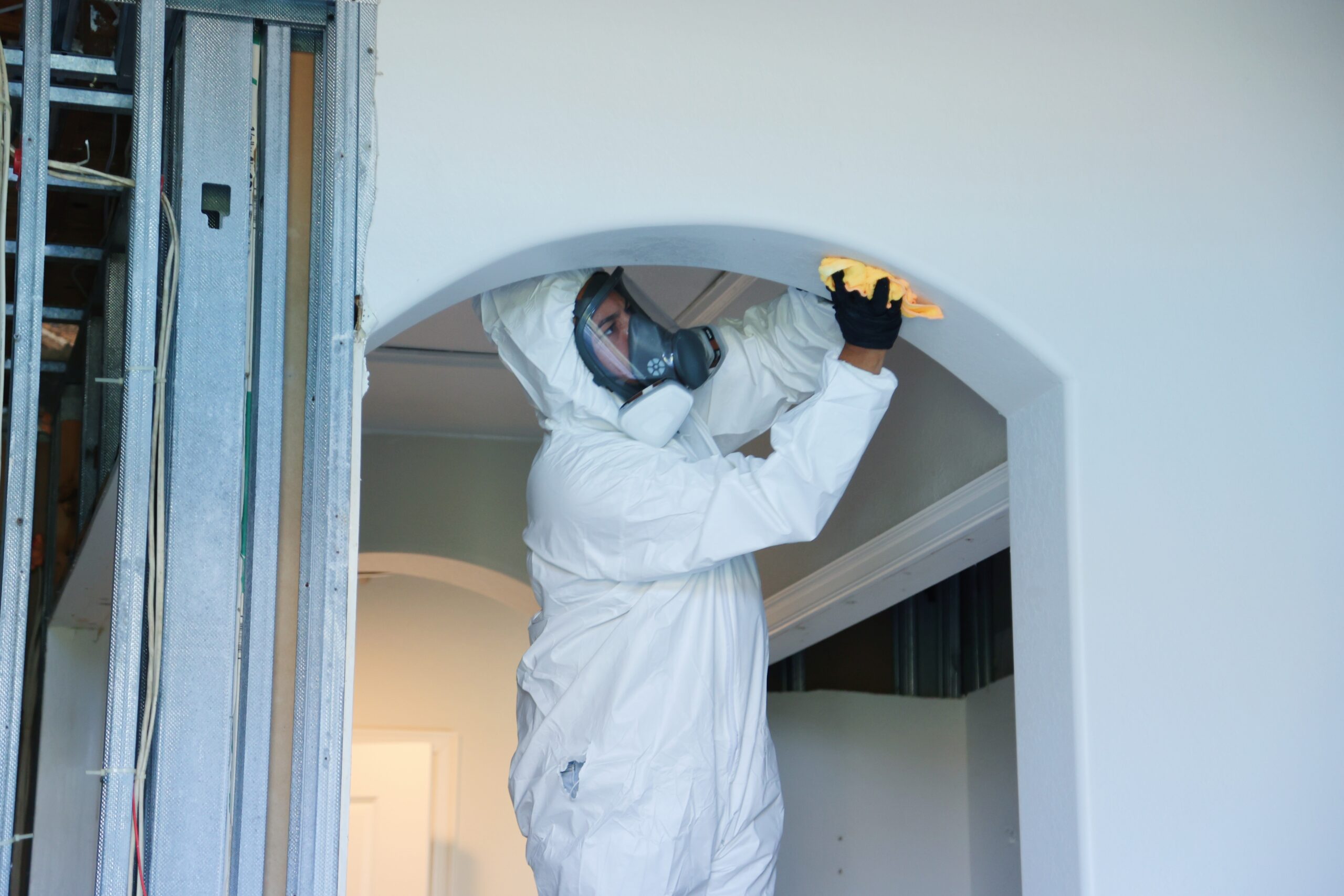Mold is a year-round problem that many homeowners face, but what happens when temperatures drop? A common misconception is that the cold weather of winter will halt mold growth or even kill it entirely. But is this true? In this blog, we’ll dive into the question, will cold kill mold, and explore how mold behaves in the winter months. We’ll also discuss the health risks associated with mold exposure, including the frequently asked question, can mold kill you, and offer practical prevention tips for keeping your home mold-free during the colder seasons.
Understanding Mold: How It Grows and Thrives
Mold is a type of fungus that thrives in moist, dark, and warm environments. It spreads by releasing tiny spores into the air, which can land on surfaces and grow if the conditions are right. Mold can develop on various materials, including wood, drywall, fabrics, and even insulation.
Many people believe that cold weather will eliminate mold because it can’t survive freezing temperatures. However, while cold temperatures may slow down mold growth, they do not kill it. Mold spores can remain dormant during the winter and reactivate as soon as the environment becomes warm and moist again.
So, the question remains: will cold kill mold? The simple answer is no. Cold temperatures can temporarily inhibit mold, but it doesn’t eradicate it. Mold can become a persistent issue, especially in areas with fluctuating indoor temperatures, like basements or poorly insulated rooms.
How Winter Can Contribute to Mold Growth
While winter may bring colder weather, indoor conditions often remain favorable for mold growth. When you turn on your heating system, the warmth inside your home, combined with moisture from sources like condensation or leaks, creates an ideal environment for mold to thrive.
Here are some reasons why mold continues to grow during winter:
- Condensation: Cold outdoor air meeting warm indoor surfaces can cause condensation on windows, walls, and pipes. This moisture provides a breeding ground for mold.
- Poor Ventilation: During winter, people tend to keep windows closed, reducing airflow. Poor ventilation traps moisture inside your home, promoting mold growth.
- Humid Areas: Bathrooms, kitchens, and basements are particularly prone to mold because of the high humidity levels in these spaces. Even in winter, if these areas are not properly ventilated, mold can still grow.
Given these conditions, it’s essential to take proactive steps to prevent mold during the colder months, regardless of whether the temperature drops below freezing.
Can Mold Kill You?
Mold exposure can lead to a variety of health issues, but can mold kill you? In most cases, the answer is no. However, prolonged exposure to certain types of mold, such as toxic black mold, can pose serious health risks, especially for individuals with pre-existing conditions like asthma or weakened immune systems.
Common black mold health symptoms include respiratory problems, coughing, wheezing, skin rashes, and eye irritation. Some individuals may experience more severe reactions, particularly if they are exposed to black mold toxicity, which can result in neurological issues, chronic fatigue, and in extreme cases, life-threatening infections.
Although mold exposure is rarely fatal, it can severely impact your quality of life. Those with compromised immune systems or chronic respiratory conditions should be particularly cautious about mold exposure. If you suspect mold in your home, it’s critical to act quickly to mitigate the risk.
Can Mold Grow in Cold Temperatures?
Yes, mold can grow in cold temperatures. Mold requires three elements to thrive: moisture, a suitable food source, and the right temperature. While many associate mold with warm environments, it’s a misconception that mold growth is limited to higher temperatures.
Different mold species have varying temperature preferences, with many thriving in conditions between 60°F and 80°F. Unfortunately, these temperatures overlap with the comfort range most people maintain indoors, creating ideal conditions for mold growth.
Types of Mold That Grow in Winter
Winter doesn’t deter all mold species. Common types of winter mold include:
- Alternaria
- Typically gray or black, Alternaria thrives in cold, damp environments. Indoors, it’s often found on shower curtains, bath mats, or basement walls.
- Cladosporium
- This mold can survive temperatures as low as 39.2°F (4°C). Brown to blackish-brown or greenish-gray, Cladosporium is one of the most common indoor molds.
- Penicillium
- Known for its blue or green appearance, Penicillium thrives between 44.6°F and 95°F (7°C to 35°C). Found on damp building materials, furniture, and carpeting, it can grow year-round.
Common Places for Molds in Homes
Mold can grow in various places around your home, especially in areas where moisture tends to accumulate. During winter, these areas may become even more vulnerable due to increased indoor humidity and condensation. Here are the common places for molds in homes:
- Basements: Poor ventilation and high humidity make basements a hotbed for mold growth.
- Bathrooms: Warm showers and poor ventilation can cause condensation and mold growth on walls, ceilings, and tiles.
- Kitchens: Leaky sinks, humidifiers, and poor air circulation contribute to mold in kitchen areas.
- Windowsills: Condensation on windows can provide a perfect spot for mold to form, particularly on wooden or painted surfaces.
- Attics: Poor insulation and roofing leaks can allow moisture to seep into your attic, creating an ideal environment for mold.
Addressing these areas before winter sets in can help prevent mold from growing and causing further damage to your home.
Why Does Mold Grow on Windows in Winter?
Windows are hotspots for mold in winter due to condensation. When warm indoor air meets cold window panes, moisture collects, creating a perfect environment for mold to thrive. Regular cleaning and controlling indoor humidity can reduce this issue.
Do Mold Allergies Improve in Winter?
Many people assume mold allergies subside in winter, but this isn’t always the case. Indoor heating can spread dormant spores through vents and ducts, exacerbating symptoms like sneezing, coughing, and itchy eyes. Staying indoors longer during winter can also increase exposure to mold, worsening allergies for some.
Steps to Prevent Mold Growth in Winter
Though cold temperatures don’t kill mold, there are ways you can control and reduce its presence in your home. Here’s how you can effectively prevent mold growth during the colder months:
- Fix Leaks Promptly: If you notice any leaks around windows, pipes, or your roof, have them repaired immediately. Leaks allow moisture to build up, encouraging mold growth.
- Use a Dehumidifier: In areas where moisture is common, such as basements or bathrooms, use a dehumidifier to maintain humidity levels below 60%.
- Improve Ventilation: Even in winter, make sure your home is well-ventilated. Run exhaust fans in the bathroom and kitchen and open windows for short periods to improve airflow.
- Clean Regularly: Regularly clean surfaces prone to mold growth, such as bathrooms and windowsills. Use mold-killing products and ensure that areas stay dry after cleaning.
- Insulate Your Home: Proper insulation can prevent condensation by keeping warm air inside and cold air outside. This will reduce the likelihood of moisture buildup.
For homes that already have significant mold issues, it’s advisable to consult a mold remediation company in Tampa to ensure safe and thorough removal.
The Role of Air Quality Testing
Since mold spores can go airborne, they can affect the indoor air quality in your home. Poor air quality due to mold can worsen health conditions such as asthma and allergies. If you’re experiencing black mold health symptoms, consider conducting air quality testing to determine the levels of mold in your home. This can help identify the severity of the problem and guide you in taking the necessary steps for remediation.
Professional Mold Remediation in Tampa
If you have a mold issue that you can’t control on your own, professional tampa mold remediation services can help. Experts in mold removal will assess the situation, identify the source of the mold, and implement the appropriate strategies to eliminate it.
Professional remediation services often include air quality testing, thorough cleaning, and sealing areas to prevent future mold growth. Whether it’s black mold toxicity or less harmful black mold, having experts manage the process ensures the safety and cleanliness of your home.
Conclusion
So, will cold kill mold? The answer is no—cold weather might temporarily slow down its growth, but mold can survive in freezing conditions and re-emerge when the environment becomes favorable. Mold is not just a seasonal issue; it can grow year-round, especially in areas with high moisture levels.
Taking steps to manage moisture and humidity in your home is essential for preventing mold growth, regardless of the season. If you’re already experiencing mold issues, hiring a mold remediation company in Tampa is the best way to ensure a thorough and safe removal. Addressing mold early on can save you from bigger problems in the future, both in terms of health and home maintenance.




